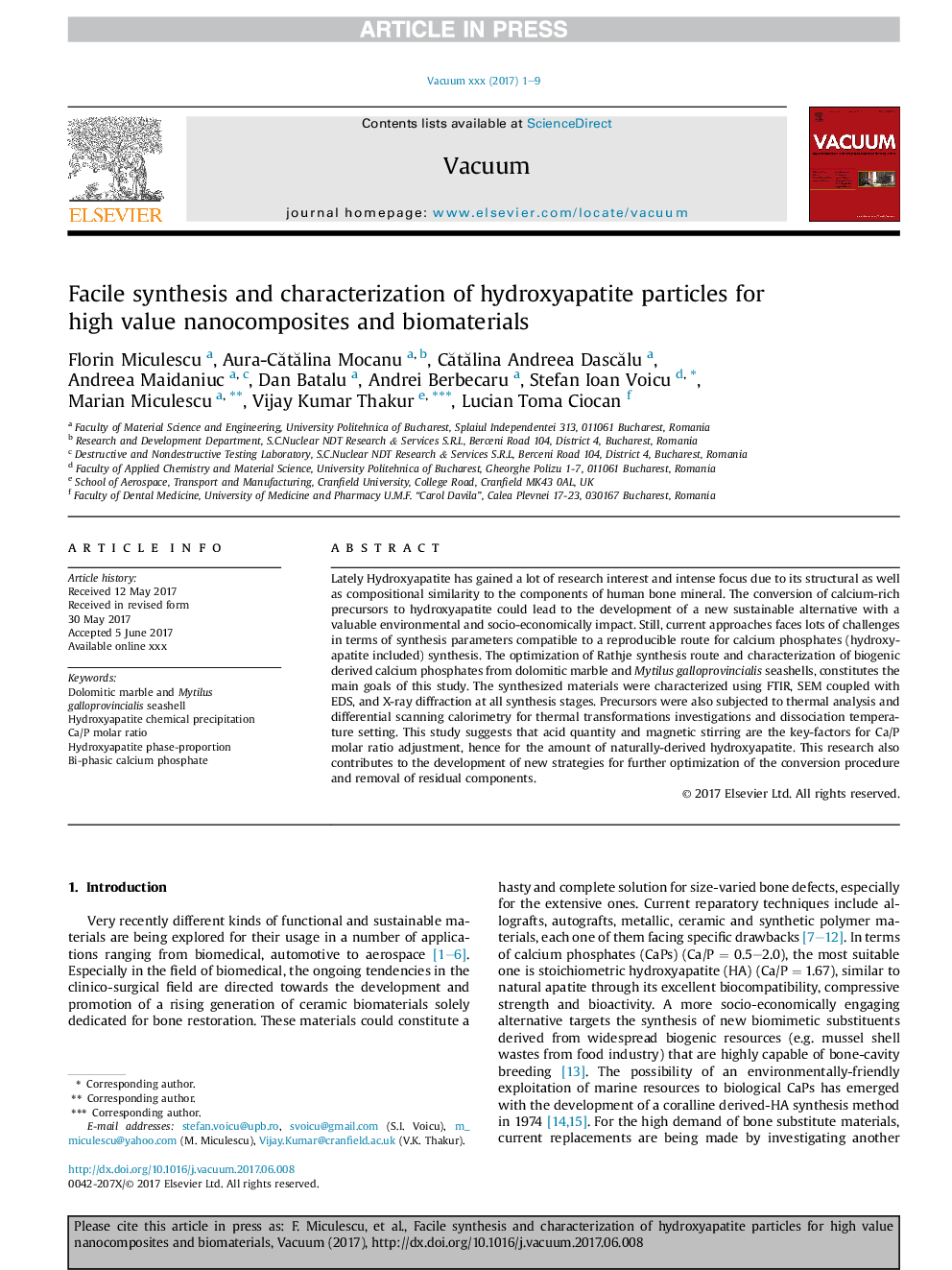| Article ID | Journal | Published Year | Pages | File Type |
|---|---|---|---|---|
| 8044814 | Vacuum | 2017 | 9 Pages |
Abstract
Lately Hydroxyapatite has gained a lot of research interest and intense focus due to its structural as well as compositional similarity to the components of human bone mineral. The conversion of calcium-rich precursors to hydroxyapatite could lead to the development of a new sustainable alternative with a valuable environmental and socio-economically impact. Still, current approaches faces lots of challenges in terms of synthesis parameters compatible to a reproducible route for calcium phosphates (hydroxyapatite included) synthesis. The optimization of Rathje synthesis route and characterization of biogenic derived calcium phosphates from dolomitic marble and Mytilus galloprovincialis seashells, constitutes the main goals of this study. The synthesized materials were characterized using FTIR, SEM coupled with EDS, and X-ray diffraction at all synthesis stages. Precursors were also subjected to thermal analysis and differential scanning calorimetry for thermal transformations investigations and dissociation temperature setting. This study suggests that acid quantity and magnetic stirring are the key-factors for Ca/P molar ratio adjustment, hence for the amount of naturally-derived hydroxyapatite. This research also contributes to the development of new strategies for further optimization of the conversion procedure and removal of residual components.
Keywords
Related Topics
Physical Sciences and Engineering
Materials Science
Surfaces, Coatings and Films
Authors
Florin Miculescu, Aura-CÄtÄlina Mocanu, CÄtÄlina Andreea DascÄlu, Andreea Maidaniuc, Dan Batalu, Andrei Berbecaru, Stefan Ioan Voicu, Marian Miculescu, Vijay Kumar Thakur, Lucian Toma Ciocan,
